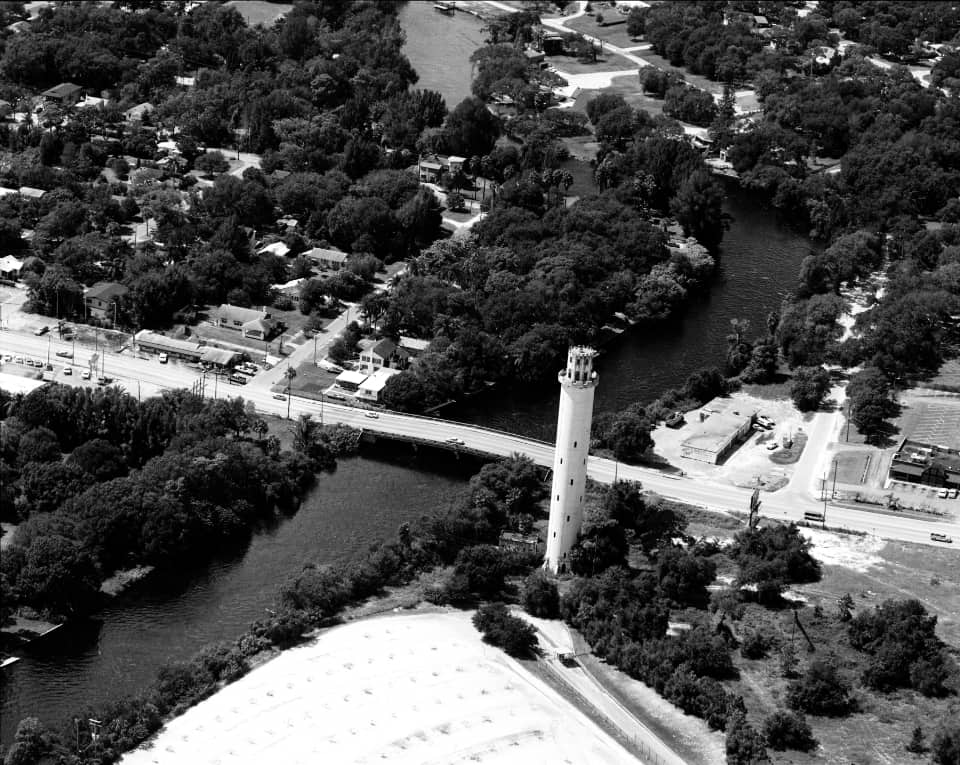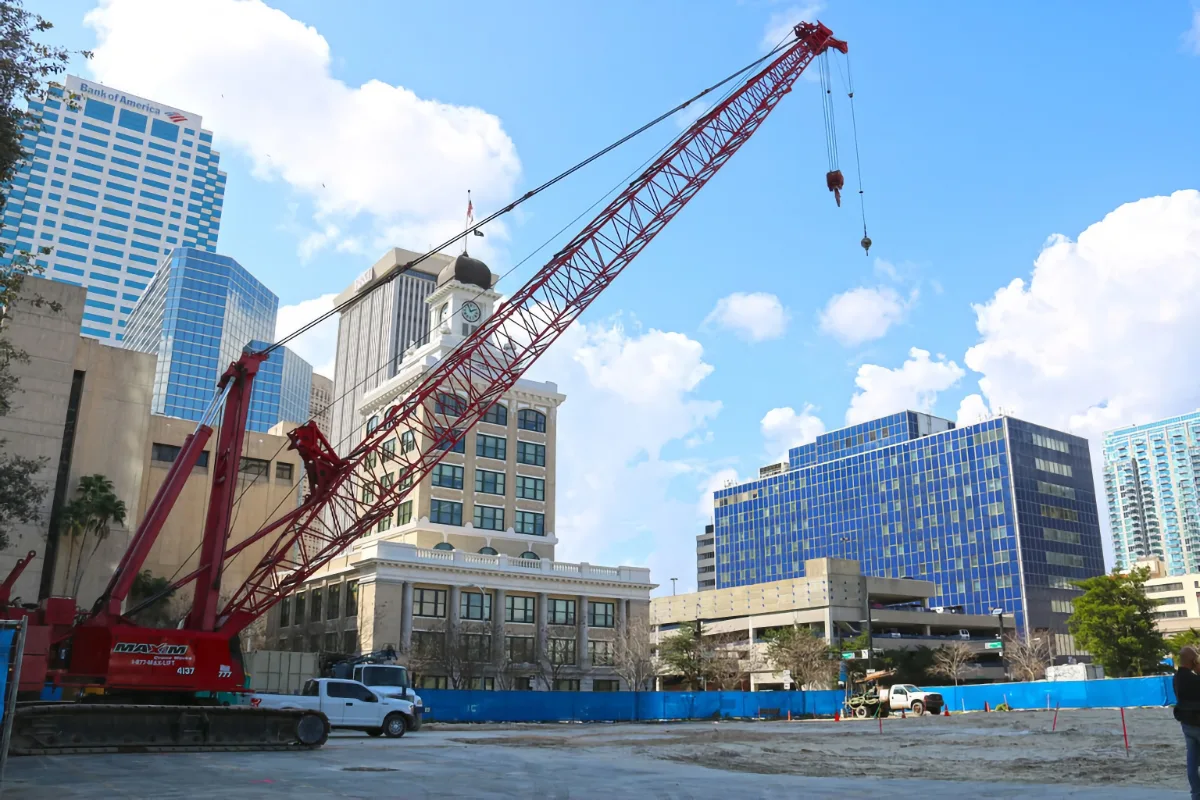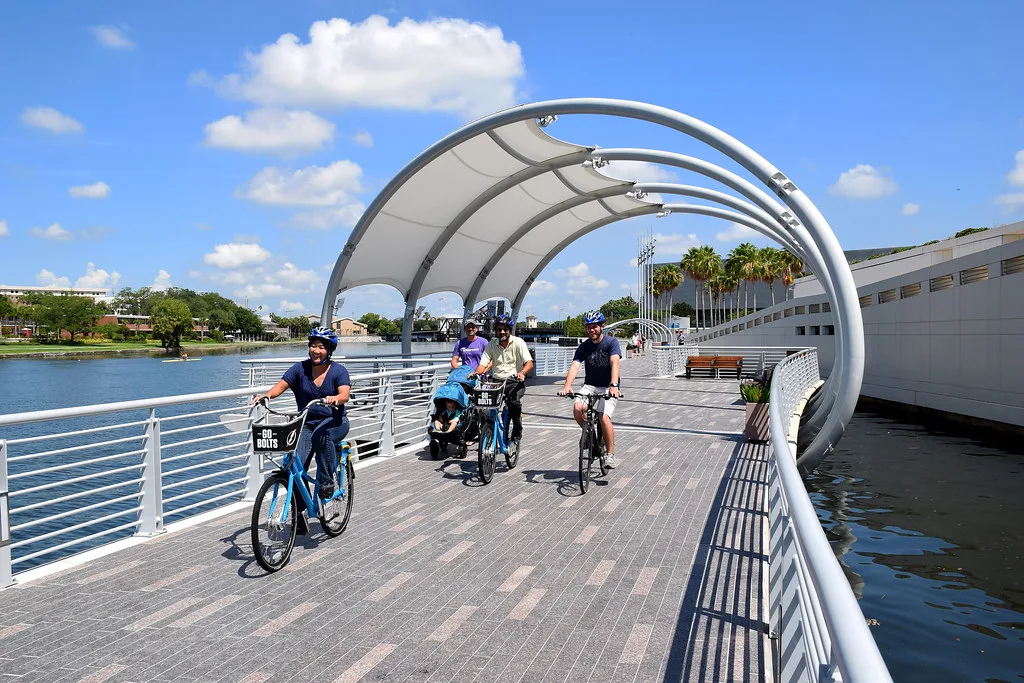The first impact fee workshop was straight forward laying out the history of the fee — it hasn’t been updated since being introduced in 1989. City of Orlando’s fee for a single family home averages $5,000. In Tampa it’s $1,772. Hillsborough County is $9,183. One of the components to determining the fee, the ITE Trip Generation Manual, is currently on the 12th edition. When the fee was set they were on the 3rd edition. It’s clear and obvious the fee needs to be adjusted, the question will come down to how much. The extraordinary circumstances determination allows the rate to be raised more than 50%. Staff indicates they will be presenting the new calculated fee range at this week’s workshop. The updated presentation for this week includes a “What Can We Build?” slide:
- New roadways and widening of roads to add new through lanes
- New turn lanes or extension of existing turn lanes
- New bridges or grade separations, either for vehicles or pedestrians/bicyclists
- New, or upgrading of existing, drainage facilities in conjunction with roadway construction
- Acquisition of right-of-way for the purpose of constructing transportation system improvements
- Traffic signals, including new and upgraded signals, and associated software to increase the effective capacity of intersections (capital costs)
- Curbs, medians and shoulders
- Relocating utilities to accommodate roadway modifications that increase person trip capacity
- Intersection improvements
- New sidewalks and widening of existing sidewalks to add person capacity, including crossing improvements
- On-street bicycle lanes and construction of bicycle/pedestrian trails
- Wayfinding to support vehicle travel, access to transit, walking and biking
- Capital transit facilities such as shelters and pullout bays
- Park and ride lots
(Emphasis mine)
Council unanimously indicated at the first workshop they found there to be extraordinary circumstances so this workshop should be focused on the updated fees and an indication on whether they support the findings. From there 2 public hearings are required to formally adopt the fees. They would go into effect 90 days after final adoption.
Following that discussion will be an update on the Sulphur Springs Action Plan. The plan has been an ongoing effort to work with the residents of Sulphur Springs to determine their priorities and dreams for their neighborhood. Everyone agrees something needs to be done, but what? 11 years ago former Mayor Bob Buckhorn declared the “beginnings of the Sulphur Springs renaissance”. He even committed $1.4 million in HUD money to build on 25 lots the city had razed due to neglect. ($1.4 million across 25 lots seems quaint by today’s numbers.) Today the neighborhood is at a crossroad with the fears of balancing redevelopment with gentrification. The looming fate of the dog track (and its inherit gambling rights) is key to what ever happens in Sulphur Springs. That’s beyond the scope of the action plan, but the action plan, if well done, can be a playbook the next mayor and council use to guide their decisions. During the WMNF forum with the District 5 candidates, they were asked about the possibility of a baseball stadium replacing the dog track. Naya Young said she would rely on the plan and what the community that’s worked on that to guide her decision.
Additionally council will discuss large format digital media and a proposed design standard for the downtown core (a discussion initially brought forward by the late Council member Gwen Henderson). Giving even odds Council member Charlie Miranda uses his “we used to roll up the sidewalks at 5pm downtown” joke during the discussion. Finally, there’s a planned discussion about construction companies using seawalls in residential neighborhoods like Davis Islands as a loading dock to transfer materials.
The public is invited to speak individually to each item during a workshop but there is not a general public comment period for these meetings.
The evening agenda has 4 comprehensive plan related items and 3 alcohol beverage permits. Two of the comp plan items are significant changes to the future land use map in east Ybor along and south of 7th Ave, east of 22nd St. (Side note — the map included in the Tampa Monitor version of the agenda now includes future land use items as well as parcel outlines to better represent the property applying). The other 2 comp plan related items are related to the budget the city has already adopted. It’s unclear why the required review of the 5 year Capital Improvement Plan (CIP) by the planning commission—approved September 8—is being presented a month after the adoption. Not that city council spent any time discussing the CIP this year. The final item appears to be changes in language to the comp plan but exact changes are unclear from the provided backup materials.





